#marco ferrara
Explore tagged Tumblr posts
Text
0 notes
Text
Donatello riemerso a Ferrara: Marco Scansani ci racconta la sua scoperta
In una collezione privata vicino S. Stefano, il giovane ricercatore ha trovato la metà di una terracotta raffigurante i funerali della Vergine Maria, opera di Donatello del 1450 (l’altra metà è stata rubata nel 1916), oltre a due frammenti con alcuni evangelisti. La nostra intervista a cura di Andrea Musacci «Mi trovavo a Ferrara per portare avanti la mia indagine sulle terrecotte ferraresi…

View On WordPress
0 notes
Text
Opera on YouTube, Part 2
Le Nozze di Figaro (The Marriage of Figaro)
Glyndebourne Festival Opera, 1973 (Knut Skram, Ileana Cotrubas, Kiri Te Kanawa, Benjamin Luxon; conducted by John Pritchard; English subtitles)
Jean-Pierre Ponnelle studio film, 1976 (Hermann Prey, Mirella Freni, Kiri Te Kanawa, Dietrich Fischer-Dieskau; conducted by Karl Böhm; English subtitles) – Acts I and II, Acts III and IV
Tokyo National Theatre, 1980 (Hermann Prey, Lucia Popp, Gundula Janowitz, Bernd Weikl; conducted by Karl Böhm; Japanese subtitles)
Théâtre du Châtelet, 1993 (Bryn Terfel, Alison Hagley, Hillevi Martinpelto, Rodney Gilfry; conducted by John Eliot Gardiner; Italian subtitles)
Glyndebourne Festival Opera, 1994 (Gerald Finley, Alison Hagley, Renée Fleming, Andreas Schmidt; conducted by Bernard Haitink; English subtitles)
Zürich Opera House, 1996 (Carlos Chaussón, Isabel Rey, Eva Mei, Rodney Gilfry; conducted by Nikolaus Harnoncourt; English subtitles)
Berlin State Opera, 2005 (Lauri Vasar, Anna Prohaska, Dorothea Röschmann, Ildebrando d'Arcangelo; conducted by Gustavo Dudamel; French subtitles)
Salzburg Festival, 2006 (Ildebrando d'Arcangelo, Anna Netrebko, Dorothea Röschmann, Bo Skovhus; conducted by Nikolas Harnoncourt; English subtitles) – Acts I and II, Acts III and IV
Teatro all Scala, 2006 (Ildebrando d'Arcangelo, Diana Damrau, Marcella Orasatti Talamanca, Pietro Spagnoli; conducted by Gérard Korsten; English and Italian subtitles)
Salzburg Festival, 2015 (Adam Plachetka, Martina Janková, Anett Fritsch, Luca Pisaroni; conducted by Dan Ettinger; no subtitles)
Tosca
Carmine Gallone studio film, 1956 (Franca Duval dubbed by Maria Caniglia, Franco Corelli, Afro Poli dubbed by Giangiacomo Guelfi; conducted by Oliviero de Fabritiis; no subtitles)
Gianfranco de Bosio film, 1976 (Raina Kabaivanska, Plácido Domingo, Sherrill Milnes; conducted by Bruno Bartoletti; English subtitles)
Metropolitan Opera, 1978 (Shirley Verrett, Luciano Pavarotti, Cornell MacNeil; conducted by James Conlon; no subtitles)
Arena di Verona, 1984 (Eva Marton, Jaume Aragall, Ingvar Wixell; conducted by Daniel Oren; no subtitles)
Teatro Real de Madrid, 2004 (Daniela Dessí, Fabio Armiliato, Ruggero Raimondi; conducted by Maurizio Benini; English subtitles)
Royal Opera House, Covent Garden, 2011 (Angela Gheorghiu, Jonas Kaufmann, Bryn Terfel; conducted by Antonio Pappano; English subtitles)
Finnish National Opera, 2018 (Ausrinė Stundytė, Andrea Carè, Tuomas Pursio; conducted by Patrick Fournillier; English subtitles)
Teatro alla Scala 2019 (Anna Netrebko, Francesco Meli, Luca Salsi; conducted by Riccardo Chailly; Hungarian subtitles)
Vienna State Opera, 2019 (Sondra Radvanovsky, Piotr Beczala, Thomas Hampson; conducted by Marco Armiliato; English subtitles)
Ópera de las Palmas, 2024 (Erika Grimaldi, Piotr Beczala, George Gagnidze; conducted by Ramón Tebar; no subtitles)
Don Giovanni
Salzburg Festival, 1954 (Cesare Siepi, Otto Edelmann, Elisabeth Grümmer, Lisa della Casa; conducted by Wilhelm Furtwängler; English subtitles)
Giacomo Vaccari studio film, 1960 (Mario Petri, Sesto Bruscantini, Teresa Stich-Randall, Leyla Gencer; conducted by Francesco Molinari-Pradelli; no subtitles)
Salzburg Festival, 1987 (Samuel Ramey, Ferruccio Furlanetto, Anna Tomowa-Sintow, Julia Varady; conducted by Herbert von Karajan; no subtitles)
Teatro alla Scala, 1987 (Thomas Allen, Claudio Desderi, Edita Gruberova, Ann Murray; conducted by Riccardo Muti; English subtitles)
Peter Sellars studio film, 1990 (Eugene Perry, Herbert Perry, Dominique Labelle, Lorraine Hunt Lieberson; conducted by Craig Smith; English subtitles)
Teatro Comunale di Ferrara, 1997 (Simon Keenlyside, Bryn Terfel, Carmela Remigio, Anna Caterina Antonacci; conducted by Claudio Abbado; no subtitles) – Act I, Act II
Zürich Opera, 2000 (Rodney Gilfry, László Polgár, Isabel Rey, Cecilia Bartoli; conducted by Nikolaus Harnoncourt; English subtitles)
Festival Aix-en-Provence, 2002 (Peter Mattei, Gilles Cachemaille, Alexandra Deshorties, Mirielle Delunsch; conducted by Daniel Harding; no subtitles)
Teatro Real de Madrid, 2006 (Carlos Álvarez, Lorenzo Regazzo, Maria Bayo, Sonia Ganassi; conducted by Victor Pablo Pérez; English subtitles)
Festival Aix-en-Provence, 2017 (Philippe Sly, Nahuel de Pierro, Eleonora Burratto, Isabel Leonard; conducted by Jérémie Rohrer; English subtitles)
Madama Butterfly
Mario Lanfranchi studio film, 1956 (Anna Moffo, Renato Cioni; conducted by Oliviero de Fabritiis; no subtitles)
Jean-Pierre Ponnelle studio film, 1974 (Mirella Freni, Plácido Domingo; conducted by Herbert von Karajan; English subtitles)
New York City Opera, 1982 (Judith Haddon, Jerry Hadley; conducted by Christopher Keene; English subtitles)
Frédéric Mitterand film, 1995 (Ying Huang, Richard Troxell; conducted by James Conlon; English subtitles)
Arena di Verona, 2004 (Fiorenza Cedolins, Marcello Giordani; conducted by Daniel Oren; Spanish subtitles)
Sferisterio Opera Festival, 2009 (Raffaela Angeletti, Massimiliano Pisapia; conducted by Daniele Callegari; no subtitles)
Vienna State Opera, 2017 (Maria José Siri, Murat Karahan; conducted by Jonathan Darlington; no subtitles)
Wichita Grand Opera, 2017 (Yunnie Park, Kirk Dougherty; conducted by Martin Mazik; English subtitles)
Teatro San Carlo, 2019 (Evgenia Muraveva, Saimir Pirgu; conducted by Gabriele Ferro; no subtitles)
Rennes Opera House, 2022 (Karah Son, Angelo Villari; conducted by Rudolf Piehlmayer; French subtitles)
#opera#complete performances#youtube#le nozze di figaro#the marriage of figaro#tosca#don giovanni#madama butterfly#madame butterfly#wolfgang amadeus mozart#giacomo puccini
89 notes
·
View notes
Text
Also preserved in our archive
"Just a cold" that increases intercranial abnormalities
By Nikhil Prasad
Medical News: A groundbreaking study conducted at San Marco University Hospital in Catania, Sicily, Italy, has revealed new insights into the potential impacts of SARS-CoV-2 on newborns. Researchers from this hospital and the University of Ferrara carried out an ultrasonographic analysis on newborns exposed to the virus, highlighting a significant incidence of minor intracranial abnormalities compared to unexposed infants. The findings raise important questions about the long-term neurological implications for children born during the COVID-19 pandemic.
The Study at a Glance This Medical News report delves into the research conducted by Bruna Scalia, Marco Andrea Nicola Saporito, and their colleagues, investigating cranial ultrasonography (cUS) findings in infants born to mothers who tested positive for SARS-CoV-2 during pregnancy or at delivery. The team analyzed data from 278 newborns, evenly split between exposed and unexposed cohorts. The study adhered to stringent observational protocols to ensure the reliability of results.
Key Findings Among the 139 newborns exposed to SARS-CoV-2, 23% exhibited intracranial abnormalities on cUS, compared to 16.5% in the unexposed group. Minor abnormalities were most prevalent and included subependymal cysts (SEPCs), choroid plexus cysts (CPCs), frontal horn cysts (FHCs), and lenticulostriate vasculopathy (LV). Major abnormalities, such as cerebellar hemorrhages and arachnoid cysts, were rare but noteworthy.
Interestingly, infants exposed to SARS-CoV-2 during pregnancy had a higher rate of abnormalities (38.4%) than those exposed at birth (19.5%). The second trimester emerged as a particularly critical period, with the majority of abnormalities observed in this subgroup.
Why These Findings Matter The study's results are alarming for public health professionals and expectant mothers. While SARS-CoV-2's immediate risks to newborns have been considered minimal, this research suggests subtle yet significant neurological effects. These abnormalities, although classified as minor, may carry long-term implications for cognitive and behavioral development.
The link between maternal inflammation and fetal development is not new, but the cytokine storm induced by SARS-CoV-2 appears to heighten this risk. The researchers hypothesize that inflammatory markers like interleukin-6 could cross the placenta, affecting the fetal brain and potentially disrupting synaptogenesis.
Methodology Details All newborns in the study underwent cranial ultrasonography within their first week of life. The scans were conducted using standardized equipment by experienced neonatologists. The findings were categorized as normal, minor, or major abnormalities. To exclude confounding factors, the study excluded infants with other infections or genetic disorders.
Demographic factors, such as gestational age and birth weight, were comparable across both groups. However, premature birth and maternal complications, such as gestational diabetes and hypertension, were noted as potential contributors to the observed abnormalities.
Implications for Future Research The findings call for more extensive, longitudinal studies to understand the long-term effects of these abnormalities. Current evidence suggests a potential association between minor abnormalities like SEPCs and neuropsychiatric conditions such as autism and ADHD. Further investigation could clarify whether these cUS findings are precursors to such outcomes.
What Experts Are Saying The study's authors emphasize caution, noting that minor intracranial abnormalities do not necessarily predict adverse outcomes. However, they recommend routine cranial ultrasonography for newborns exposed to SARS-CoV-2 as a precautionary measure. "The cost-effectiveness and non-invasive nature of cUS make it a valuable tool in monitoring these infants," said lead researcher Bruna Scalia.
Limitations and Strengths of the Study One limitation of the study was its relatively small sample size, particularly for subgroups like prenatally exposed infants. Additionally, the lack of serological testing for unexposed mothers could have introduced undetected cases into the control group. However, the study's rigorous methodology and use of a well-matched control group lend credibility to its conclusions.
Study Conclusions The research underscores a statistically significant increase in minor intracranial abnormalities among SARS-CoV-2-exposed newborns. These findings are particularly pronounced in infants exposed during the second trimester of pregnancy. While the abnormalities observed in the study were predominantly minor, their potential impact on long-term neurological outcomes cannot be overlooked. The researchers advocate for the following:
-Routine cUS Screening: Cranial ultrasonography should be performed on all newborns exposed to SARS-CoV-2 to identify abnormalities early.
-Long-Term Follow-Up: Exposed infants should be enrolled in neurodevelopmental follow-up programs to monitor their progress and intervene if necessary.
-Expanded Research: Larger, multicenter studies are needed to confirm these findings and explore the mechanisms behind SARS-CoV-2's impact on fetal brain development.
By highlighting these abnormalities, the study adds a critical layer to our understanding of COVID-19's broader implications, particularly for future generations.
The study findings were published in the peer-reviewed Italian Journal of Pediatrics. link.springer.com/article/10.1186/s13052-024-01826-3
#mask up#public health#wear a mask#pandemic#wear a respirator#covid#covid 19#still coviding#coronavirus#sars cov 2
22 notes
·
View notes
Text
Chi non muore si rivede
La notizia non è che Putin ha vinto le elezioni dopo un testa a testa mozzafiato con se stesso. Ma che l’autocrate è ancora vivo, è saldo al comando, ha più consensi di quando invase l’Ucraina, la Russia esiste ancora, i russi sono contenti per la guerra e l’economia (il sondaggista indipendente Volkov a Repubblica: “I russi stanno col leader per l’economia e per Kiev. Un ruolo importante lo hanno giocato anche l’aumento di salari, pensioni e benefit sociali”). Che strano. Le famose sanzioni non hanno mandato Mosca “in default entro qualche giorno” (Letta, 9.3.’22), né avuto “il massimo impatto in estate” (Draghi, 31.5.’22), né sortito “effetti devastanti” (Gentiloni, 4.6.’22). Eppure gli espertoni erano unanimi. Mario Deaglio: “Il rublo non vale più nulla”. Dario Fabbri: “Comunque vada, il fallimento della Russia è già evidente”. Rep: “Il default russo è a un passo”. Stampa: “Per la Russia è default”. Giornale: “Mosca è in default (ma solo tra un mese)”. La sua “Armata Rotta” che “combatte con pale del 1869” e “le dita al posto delle baionette”, ha “finito i russi”, “le divise”, “le munizioni”, ”i missili” ed estrae “i chip per i carri armati da lavatrici, frigoriferi e addirittura tiralatte elettrici”, passava da una disfatta a una ritirata. E l’Invincibile Armata Kiev-Nato trionfava. Rampini: “È iniziata la disfatta militare russa”. Tocci: “Putin ha perso la guerra”. Ferrara: “Kiev le sta dando di santa ragione al colosso russo”. Riotta: “Putin sconvolto dalla Caporetto dell’esercito”. Molinari: “Putin isolato in un vicolo cieco”. Sempreché fosse ancora vivo. Il dissidente Khodorkovsky alla Cnn: “Putin è impazzito, gli resta un anno o forse tre”. Recalcati (Rep): “Malato? Sofferente? Intaccato dalla morte”. New Lines: “Ha un tumore del sangue”. Daily Telegraph: “Sta morendo di cancro all’intestino”. Proekt, giornale indipendente russo: “Ha un tumore alla tiroide e lo cura facendo il bagno nel sangue estratto da corna mozzate di cervo”. Libero: “Cura il cancro con i clisteri”. Rep: “Il gonfiore del viso, il problema a una gamba, la fatica a muovere un braccio”. Messaggero: “Gonfiore e scatti d’ira da farmaci e steroidi per il tumore”. Stampa: “Demenza senile o Parkinson”. Corriere: “Problemi alla colonna vertebrale per pregressi traumi sportivi, o una neoplasia al midollo spinale compatibile con difficoltà deambulatorie e irrequietezze posturali… down depressivo ed esaltazione maniacale”. Giornale: “Può anche essere diabete”. Messaggero: “Putin è morto? Per Zelensky, ‘non è sicuro che sia ancora vivo’. Quello sugli schermi potrebbe essere una controfigura”. Ora che la cara salma ha rivinto le elezioni con una discreta cera, sorge un dubbio atroce: uno scambio di cartelle cliniche fra la sua e quella di Biden.
Marco Travaglio
P.s. La particolarità di Travaglio è che lui conserva gli articoli dei colleghi e questo rappresenta un problema (per i colleghi). Detto ciò sarebbe confortante, di quando in quando, leggere un articolo in cui un qualunque "giornalista" rendesse conto delle proprie affermazioni, sul tipo: "Signori, ho scritto una cazzata, scusate".
12 notes
·
View notes
Text




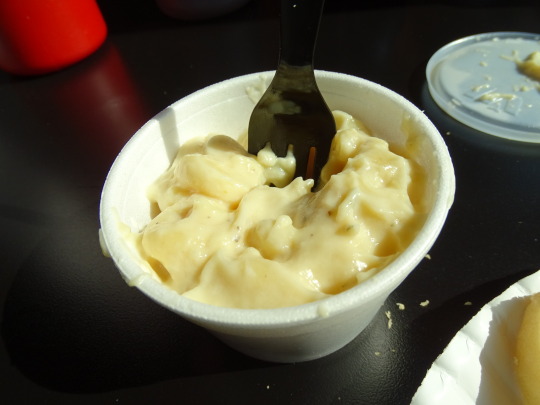
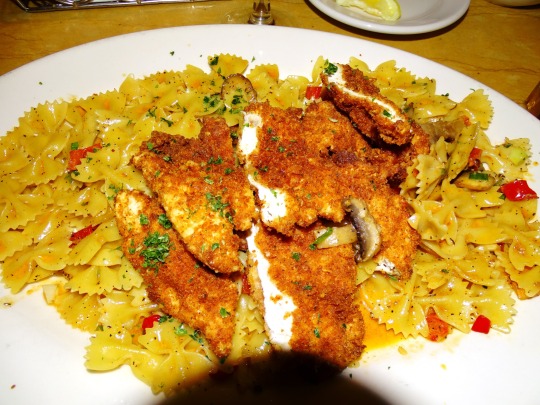




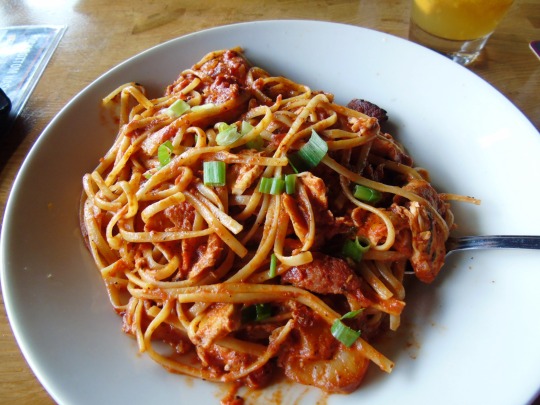
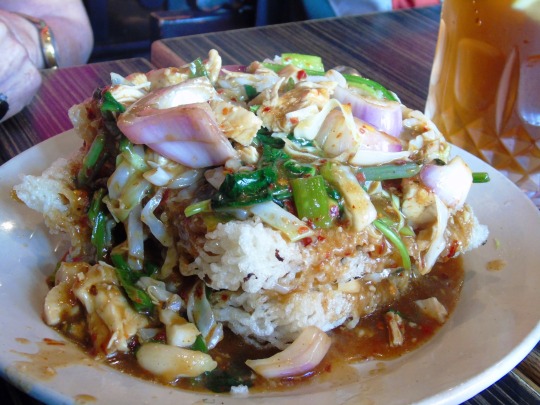


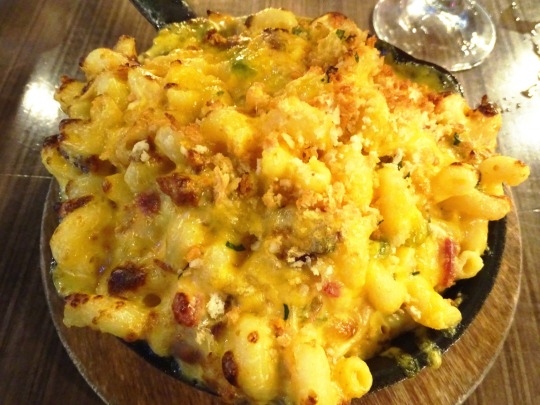
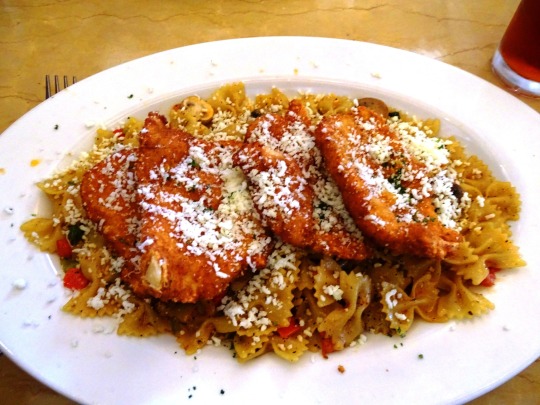





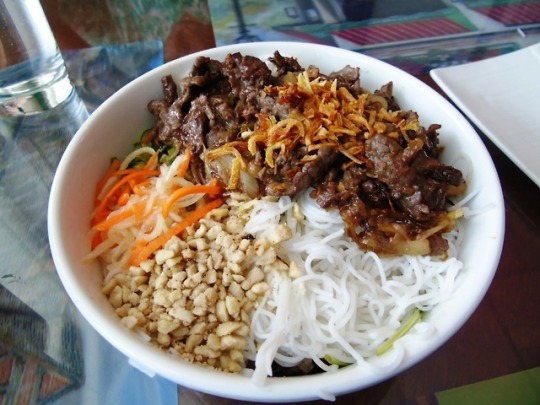







National Pasta Day
No matter where it started or how it became so popular, pasta is a simple and versatile dish that is absolutely worth celebrating.
Fusilli, Penne, Spaghetti, Capellini and Fettuccine, pasta comes in a myriad of shapes and sizes. Pasta acts as a sort of blank canvas for the almost infinite variety of sauces that can be made to pair with them.
And National Pasta Day is the perfect time to learn more about and celebrate all things pasta!
History of National Pasta Day
Historians don’t completely agree on the origins of pasta. Many people believe that pasta originated in Italy, while others say that it came all the way from China when Marco Polo was on his adventures in the 13th century.
Still other historians claim that pasta is actually much older than that, to the 4th century BC. In fact, in the place that is now Italy, an Etruscan tomb shows pictures of natives making something that appears to be pasta.
Even Greek mythology gets involved in the stories about the origination of pasta. The god Hephaestus, known as Vulcan, made a device that would create long strands of dough, which some people think may have been a version of pasta or spaghetti.
Not long before he became the President of the United States, Thomas Jefferson is believed to have brought pasta to the US after a trip to Paris in the late 1780s. After eating what he referred to as “macaroni” in France, Jefferson brought two cases back with him and helped influence its popularity in America.
National Pasta Day Timeline
4th Century BC
Pasta is traced back to Etruscan civilization
The Etruscan civilization shows evidence of people making pasta in the area that is now known as Italy.
12th Century AD
Pasta-like noodles are made in China
During the Shang Dynasty, in what is now Northern China, noodles are made from rice or wheat flour.
16th Century AD
First pasta maker in Italy
Beginning at the court of Ferrara and then adopted by the Neopolitans, the pasta maker Christoforo Messisbugo documents what he refers to as the ”macaroni invention”.
Late 1780s
Thomas Jefferson brings pasta to the US
After an extended trip to Paris, the future US President brings crates of pasta back from Europe to America.
1877
Barilla Pasta Company is founded
Founded in Parma, Italy, the Barilla company will eventually become the largest pasta company in the world.
How to Celebrate National Pasta Day
Get into the spirit of this delightful day by inviting friends and family to enjoy and celebrate National Pasta Day in a variety of ways. Consider taking part in some of these ideas, or come up with some of your own:
Enjoy Eating Pasta
Of course, National Pasta Day is the right time to enjoy eating some pasta! And the great thing is that there are so many different options of ways to enjoy pastas.
Invite some friends or family members over for a meal and experiment with some new and interesting recipes for pasta. Try out some unique ideas for making sauces for pasta, such as these:
Truffle Cream Pasta Sauce. Enjoy this exquisite sauce made from special truffle oil, heavy cream, butter and Parmesan cheese. Serve it on penne or linguini.
Frutti de Mare Pasta Sauce. A seafood based pasta sauce, the name literally means “fruit of the sea”. The sauce is fairly quick to cook up, including mussels, wild shrimp and squid tentacles that are cooked in a base made from white wine, basil, garlic and arrabbiata tomato sauce. Serve on long noodles like spaghetti or fettuccine.
Arrabbiata Pasta Sauce. A simple sauce made from tomatoes, garlic and dried chili peppers, this one is delicious when cooked in olive oil. This type of sauce originates from the region of Rome and is a classic sauce that can be served on almost any pasta, from spaghetti to zucchini noodles.
Salsa di Noci Pasta Sauce. This rich and creamy pasta sauce is made from cream, walnuts, Pecorino Romano cheese and fresh herbs. Serve the sauce of short, freshly-made pastas.
Learn Fun Facts About Pasta
Enjoy National Pasta Day and spread the word to friends and family members by sharing various delightful bits of trivia. Try out some of these fun facts to get started:
The average person living in Italy eats approximately 51 pounds of pasta every year!
Italy produces approximately 2.75 million tons of pasta each year, while the United States produces around 1.9 million tons annually.
At least 600 different shapes of pasta are made all around the world, and each type has its own purpose.
Before pasta machines were invented, the dough for pasta was kneaded by foot as workers would walk over large batches of the dough!
Get a Discount for National Pasta Day
Some restaurants that serve pasta may choose to offer a special discount in honor of National Pasta Day! In celebration of the day, check out which national restaurant chains have been known to offer certain deals. Consider enjoying pasta places such as Noodles & Company, Olive Garden, Buca di Beppo, Carrabba’s Italian Grill and many others.
One great thing about celebrating National Pasta Day at a local restaurant is that it means someone else will make the meal for you – and they will even clean it up! Plus, when eating with a group, it’s fun for everyone in the party to order a different dish so everyone can try something new.
Take a Trip to Italy
In celebration of National Pasta Day, take the opportunity to head over to the place that does pasta best – Italy! What could be a better place to really soak up the delicious and delightful flavors of pastas and sauces?
Some people might want to make their decisions about travel based on the types of pasta that different regions of Italy have to offer. Take a look at some of these pastas hailing from different regions in Italy:
Farfalle from Lombardy. Also known as ‘bow-tie pasta’, farfalle may be best enjoyed in the north-central region of Italy where Milan, and Bergamo are located.
Penne from Campania. These delightful little tubes of pasta work well to hold the sauce for bursts of flavor. Enjoy dishes with penne pasta in the region of Campania, which is the south-western region that includes Naples.
Ziti from Sicily. Similar to penne, ziti are short tubes of pasta that are often baked after being covered in sauce. Head down to the largest Mediterranean island at the tip of Italy to enjoy this pasta shape in Sicily.
Gigli from Tuscany. Translated to mean ‘lilies’, Gigli pasta is a light and thin style that makes just a slight twirl. Gigli is from the city of Florence where the lily acts as a local emblem.
National Pasta Day FAQs
Is pasta vegan?
Yes, almost all packaged pastas are 100% vegan, though some types of noodles do contain eggs.
Did pasta come from Italy?
While some historians believe pasta came from Italy, others say that Marco Polo actually brought it from China.
Does pasta have gluten?
Yes, most standard pastas are made from flour and have gluten, though gluten free pasta is available made from rice, corn or other grains.
Does pasta have protein?
Traditional pasta is made from wheat flour and has about 8 grams of protein per serving. Some pastas made from lentils, edamame and chickpeas should contain more protein.
Is pasta healthy?
If it’s made from whole grains, pasta can provide fiber, and it is also a good source of energy from carbohydrates, which is healthy in moderation.
Source
#stir-fried noodles with pecan#Jalapeno Mac and Cheese#Lemongrass Chicken Bowl#National Pasta Day#NationalPastaDay#17 October#food#Spicy Chicken Chipotle Pasta#FARFALLE WITH CHICKEN AND ROASTED GARLIC#Cajun Jambalaya Pasta#Louisiana Chicken Pasta#Cajun Pasta#Pan Fried Noodles 'Udon'#Bacon Chicken Mac 'N Cheese#Bun Ga Xao Xao#travel#restaurant#USA#Canada#original photography#Spicy Shanghai Noodles#Rayu Udon#Spicy Bison Peperoni & Roast Vegetables Pasta#Mac 'n' Cheese#Crispy Rice Noodle Tower#vacation
3 notes
·
View notes
Text

⚠️ NOVITÀ IN LIBRERIA ⚠️
Centro studi KulturaEuropa
EUROTECNICA: FUTURO E IDENTITÀ
Atti del convegno - Roma, 16 marzo 2024
Afflitta, invasa, colpevolizzata, divisa e a tratti subalterna, l’Europa è considerata “il malato del mondo”: una vecchia Civiltà in declino, che molti vorrebbero cancellare dalla storia. Eppure, nonostante tutto, il nostro continente resta un riferimento imprescindibile e continua ad avere potenzialità sterminate.
Il centro studi Kulturaeuropa – nel convegno “Eurotecnica”, qui trascritto nei suoi Atti – ha tracciato le linee guida per una futura Riconquista: dal vulnus politico dell’Unione Europea agli orizzonti della cultura; dal rapporto con l’Intelligenza Artificiale alla sfida della tecnica; dalla transizione energetica al sistema bancario e monetario, passando per la biopolitica, per l’universo digitale e per le scelte industriali. Negli anni a venire, che saranno decisivi in ogni ambito, l’Europa ha il dovere di svincolarsi dalle dipendenze in atto, recuperare una centralità e acquisire un nuovo spazio d’azione. Rigenerarsi o perire: è questo il nodo che abbiamo il dovere di sciogliere, coniugando accelerazione e fedeltà alle origini, capacità di movimento e centralità identitaria, quiete spirituale e volontà di potenza.
Gli interventi contenuti in questo testo, di grande spessore, hanno il merito di rompere la stasi passiva che affligge i nostri popoli, rilanciando quella vocazione di conquista che ha sempre mosso la nostra stirpe.
Con gli interventi di:
Francesco Ingravalle, Carlomanno Adinolfi, Adriano Scianca, Gian Piero Joime, Marco Massarini, Sergio Filacchioni, Ada Fichera, Daniel Casarin, Francesco Guarente. Prefazione di Marco Scatarzi
Postfazione di Giancarlo Ferrara
INFO & ORDINI:
www.passaggioalbosco.it
5 notes
·
View notes
Text
30 anni senza Gian Maria Volonté Trent’anni fa moriva il grande attore, ... #gianmariavolonté https://agrpress.it/30-anni-senza-gian-maria-volonte/?feed_id=8472&_unique_id=67541f8c1bbbb
0 notes
Text
Due Weekend nel fine settimana

Da stasera in Piemonte prendono il via due weekend:
- ad Avigliana inizia un WE CHOICE donato da Padre Mario Barbero, Stefania e Roberto Maina, Luca Pansone, Giorgia Populin, Agnese Ferrara, Giorgio Manavella, Elena e Roberto Conte e con il supporto logistico di Mauro Frandino.
- A Cussanio inizia un WE FAMIGLIA donato da Don Marco Cena, Ponzo Marco e Patrizia con Aurora, Castagno Larè Dario e Elisabetta con Andrea, Valentina e Alessandro e con il supporto logistico di Della Sala Paolo e Ileana con Gaia e Chiara
Ringraziamo per l'impegno e la generosità di farsi dono per gli altri e ricordiamo tutti nella preghiera.
0 notes
Text
«Vi spiego come il nostro Duomo resistette al sisma nel 1570-1574»
Intervista a Marco Stefani, noto geologo e docente di UniFe: il racconto (anche inedito) dei danni «Nonostante tutto, il Duomo ha retto bene sia agli eventi sismici del 1570 sia a quelli del 2012. Di certo, ci sarà bisogno di altri interventi per mettere maggiormente in sicurezza l’edificio». A dirlo alla “Voce” è Marco Stefani, geologo e Professore Associato del Dipartimento di Architettura di…
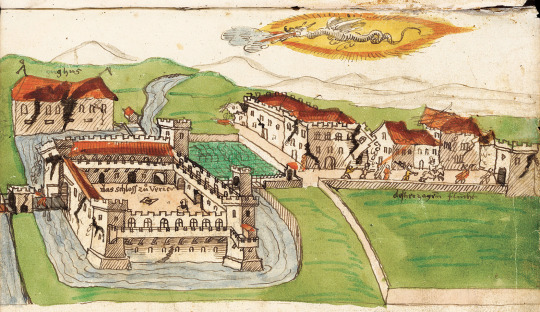
View On WordPress
0 notes
Text
Gli errori teologici di Marco Eugenico nell’opporsi al Filioque
Dalla lettura dei testi della disputa sul Filioque al Concilio di Ferrara-Firenze, si vede che il metropolita di Efeso, Marco Eugenico, era arroccato su una posizione antifilioquista che di fatto confondeva le persone divine. Continue reading Gli errori teologici di Marco Eugenico nell’opporsi al Filioque
1 note
·
View note
Text
Un Nardò da incubo, la Fidelis piazza il set.

NARDO' - FIDELIS ANDRIA 1-6
Scorers: 5' e 7' Fantacci, 12' Liurni, 32' Ciracì, 44' Da Silva, 48' Jallow, 75' Fantacci.
NARDO' (3-4-1-2): De Luca; Delvino, Gianfreda, Calderoni; Ciracì, Vrdoljak (75' Milli), Correnti, De Crescenzo (70' Montagna); Gatto (46' Orlando); D'Anna, Maletic.
Reserve: Herceg, Ria, Sorino, Calò, Mazzotta, Gassama. Head coach: Fabio De Sanzo
FIDELIS ANDRIA (4-2-3-1): Esposito; Rotondi, Sirri, Graziano, De Rosa; Cancelli (86 Martire), Risolo; Liurni (60' Lamonica), Fantacci (80' Babaj), Jallow (60' Coquin); Da Silva (86' Marsico)
Reserve: Brezzo, De Luca, Ferrara. Head Coach: Ciro Danucci
Arbitro: Marco Giordano di Matera
Assistenti: Alessandro Laurieri e Federico Marvulli di Matera
Ammoniti: Jallow e Risolo.
Note: giornata calda circa 30 gradi, terreno duro, spettatori 1500 circa. D'Anna sbaglia un rigore al 70'
La Fidelis Andria passa il turno di Coppa Italia infliggendo un’umiliante sconfitta di stampo tennistico al Nardò. Non c’è stata partita tra Nardò e Fidelis Andria, troppo netto il divario tecnico e di condizione tra le due squadre. Un Nardò ancora incompleto e imballato non è mai riuscito ad arginare le giocate in velocità di una Fidelis già pronta a candidarsi per la vittoria del campionato. Il pressing alto tipico del marchio Danucci ha dato subito i suoi effetti già nei primi minuti con tre palloni conquistati nella zona sensibile della difesa avversaria e trasformati in rete da un Fantacci in grande spolvero. Nel dettaglio al 3′ azione insistita in attacco degli andriesi, tiro di Da Silva respinto da De Luca, riprende Fantacci e ribatte ma ancora De Luca si oppone ma deve arrendersi sul terzo tiro ancora sferrato da Fantacci: 0-1
Tre minuti dopo Liurni sfila sulla destra, cross radente in area, velo di Da Silva e Fantacci insacca da pochi passi: 0-2. Al 12′ Ripartenza letale della Fidelis con Sirri che apre per Liurni, l’ex Nocerina converge e piazza il diagonale nell’angolo opposto: 0-3.
Il Nardò è contato in piedi, I granata annaspano. Maletic prova il tiro al 30′ con palla fuori. Dopo il cooling break il Toro riordina le idee e trova il goal. Al 32′ cross di De Crescenzo e inzuccata prepotente di Ciracì in rete: 1-3. Il Nardò si illude di riaprire la partita ma deve capitolare allo scadere dei 45′. Fantacci conquista palla a centrocampo, appoggia a Liurni che affonda sulla fascia e serve in area un pallone tagliente che Da Silva scaraventa in corsa in rete: 1-4.
Si va negli spogliatoi con un risultato umiliante per i granata. De Sanzo corre ai ripari e inserisce Orlando, un centrocampista al posto del trequartista Gatto. Il Nardò sembra più equilibrato ma deve soccombere ancora causa erroraccio puerile di De Luca che fuori area si fa rubare palla da Jallow, abile ad anticipare il portiere neretino e a filare indisturbato verso la porta sguarnita: 1-5.
Ma al peggio non c’è fine e il Nardò deve ingoiare altri due bocconi amari. Al 70′ Correnti viene atterrato in area. Dal dischetto batte D’Anna e colpisce il palo. Al 75′ l’ultima mazzata. Ancora una ripartenza ficcante della Fidelis con botta finale di Fantacci, tripletta e pallone a casa.
I tifosi della Fidelis applaudono e sognano. I tifosi granata ingoiano il rospo e incoraggiano non senza preoccupazioni per l’inizio del campionato.
0 notes
Text
Ruins and Shelters
*Is there any genuine difference, in the long run? Maybe in Italy, which has had more long-run than most places.
via e-flux.
Demanio Marittimo.KM-278 is the marathon dedicated to architecture, arts, design and to the Adriatic dimension curated by Cristiana Colli and Pippo Ciorra. As every year, the XIV Edition takes place on a public beach in Marzocca di Senigallia on Friday, July 19, no stop from 6pm to 6am.
RUINS&SHELTERS is the theme of this year. On the one hand, it focuses on the accelerated production of ruins produced by wars, conflicts and catastrophes. On the other hand, it reminds us the need to find different forms of shelter/protection for increasingly fragile communities and individuals.
The setting for the event is the result of a students’ competition hosted by SAAD, School of Architecture University of Camerino. Winning team for the OLTRE project are Fatijon Ademaj, Michele Forti, Qendron Mema, Gloria Seri, Elisa Valori.
Demanio opens with a tribute to this year’s Master of Territory, Guido Guidi. His work will be discussed with Simona Antonacci,Carlo Birrozzi and Antonello Frongia. Paolo Volponi’s 100 Years anniversary will be celebrated by lectures held by Massimo Raffaeli, Aldo Bonomi and Giovanni Russo, curator of an exhibition organized at the Ducal Palace of Urbino.
An interdisciplinary focus will be dedicated to Kosovo with the curator and critic Alex Fisher, the Mayor of Pristina, Perparim Rama, the curators of Hangar e Autostrada Biennale Leutrim Fishekqiu and Vatra Abrashi, the artists Sislej Xhafa, Artan Hajrullahu, Blerta Hashani.
Another experience in the field of cultural heritagewill be discussed by Andrea Viliani, Director of the Museum of Civilizations in Rome and curator of the international program Pompeii Commitment, and Davide Quadrio, Director of MAO (Museum of Oriental Art) in Turin.
RUINS&SHELTERS is also a concept that brings us to the fragile centrality of the Living Being, ethical and self-reflective when it comes to humans, “natural” for non-human beings. Sociologist and writer Marco Dotti will discuss the subject with architectural historian Francesco Benelli and composer David Monacchi.
2024 commemorates 150 years since the birth of Guglielmo Marconi. It was from the Colle dei Cappuccini in Ancona that on August 7, 1904 he initiated the legendary “radio” connection with Poldhu in Cornwall, 1750 kilometers away. Marconi’s legacy between will be the focus of the reflections of technological philosopher Cosimo Accoto with Andrea Borgnino and the artist Giovanni Gaggia.
The New York-based firm Lot-Ek will lecture about their work and offer a preview of the film dedicated to them by the director Tom Piper. Artists, designers, filmmakers will be oon stage. Gustav Düsing will talk about his award-winning project for the University of Braunschweig, introduced by Anna Sala of MVDR Foundation. Pietro Martino Federico Pizzi will present the Ceresè winery project, best building of the year, together with Grazzini, Tonazzini, Colombo, designers of the “Quintessenza” installation for the MAXXI. They will be introduced by Lorenza Baroncelli, director of MAXXI Architettura.
Many installations, artworks, and public design experiments will be exhibited. A Villa Medici fellow artist, Alix Boillot, will present her work Grace. HPO, the Ferrara collective of young architects, will present the TTT installation. The London based collective Lemonot will present Talamo, a project created by the Marche company Noctis and produced by BASE for the last Milan Design Week, introduced by Linda Di Pietro, director of BASE, and Lorenzo Petri.
The frontiers of design will be explored by We are the Others (2024, 55 min), a film by Maria Cristina Didero and Francesca Molteni dedicated to the 40 years of activity of the Brazilian brothers Fernando and Humberto Campana. After the viewing, the authors will meet with Marva Griffin. Three shorter films, produced by the LINA fellows Ewa Effron, Laura Hurley, George Guedani in the frame of the MAXXI Architecture Film Lab will be introduced by the authors.
The event is promoted by MAPPE magazine, Gagliardini Editore, Associazione Demanio Marittimo.Km-278 with the collaboration of MAXXI, the Municipality of Senigallia, the Marche Region and with the support of a wide network of businesses, institutions and associations.
0 notes
Text
An idle man is the devil's playfellow
comparable Ferrara
comparable GRACE
comparable heather
comparable Ben
comparable grant balm
comparable Miraut
comparable eve; And
comparable dawn As
comparable ken
comparable Dante
comparable amber cloud
comparable White Stag
comparable joy Grew
comparable lady Singing
comparable Alfonso
comparable Guillaume
comparable Marco Londonio's Italian
comparable Che
comparable EZRA POUND
comparable The
comparable sung
comparable grant life
comparable ruby diadem
comparable Le sue sognanti
comparable Nel lor
comparable dawn
comparable Lord Jesus Christ
comparable marge
comparable councillor Being
comparable Margot
comparable Prima che
comparable Richard
comparable Drew
comparable rosa Risplendono
comparable Leonardo Terrone
comparable Una donna ideale
comparable Alba Belingalis
comparable Having
comparable sue cantiche
comparable Moss
comparable Rev. Father Sinistrari
comparable Lady
comparable Ed aleggiar
comparable Mr. Yeats
comparable king's horny
comparable wright
0 notes
Text

*𝐏𝐑𝐎𝐒𝐒𝐈𝐌𝐈 𝐄𝐕𝐄𝐍𝐓𝐈*
𝐑𝐨𝐦𝐚, 𝐠𝐢𝐮𝐠𝐧𝐨-𝐥𝐮𝐠𝐥𝐢𝐨 𝟐𝟎𝟐𝟒
// Mercoledì 19 giugno ore 17.30 per il ciclo "Retrospettive" presentazione dei libri di Franco Ferrara "Il cielo era già in noi" (Argo, 2023) e "Lettere a Natasha" (La Vita Felice, 2023) alla Libreria Panisperna 220 con Gianluca Armaroli, Giorgiomaria Cornelio e Fabio Orecchini.
--> video integrale disponibile sul sito www.centroscritture.it e sul canale YouTube
// Venerdì 28 giugno ore 18.30 per il ciclo "Nuove Uscite" presentazione del libro "bacon, fast-food" di Carlo Bellinvia (ECS, 2024), terza uscita della collana Melanos per le nostre edizioni, alla Terrazza di Giorgio Villani, con consegna di estratti in lettura del libro e aperitivo gratuito. Presenta Giulia Cittarelli.
// Lunedì 1 luglio ore 18.30 per il ciclo "Nuove Uscite" presentazione del libro "Oggettistica" di Marco Giovenale (Tic Edizioni, 2024) con Giuseppe Garrera alla Libreria Panisperna 220.
--> libro disponibile su www.centroscritture.it/edizioni
// Mercoledì 3 luglio ore 19 per il ciclo "Nuove Uscite" presentazione del libro "Soluzioni per ambienti" di Antonio Francesco Perozzi (Zacinto edizioni, 2024) con Marco Giovenale alla libreria Sinestetica.
Coordina Valerio Massaroni.
#poesia contemporanea#poesia italiana#poesia#letteratura italiana#poetiitaliani#poesiaitaliana#poesiaitalianacontemporanea#letteratura contemporanea#corsionline#editore
0 notes
Text
1 note
·
View note